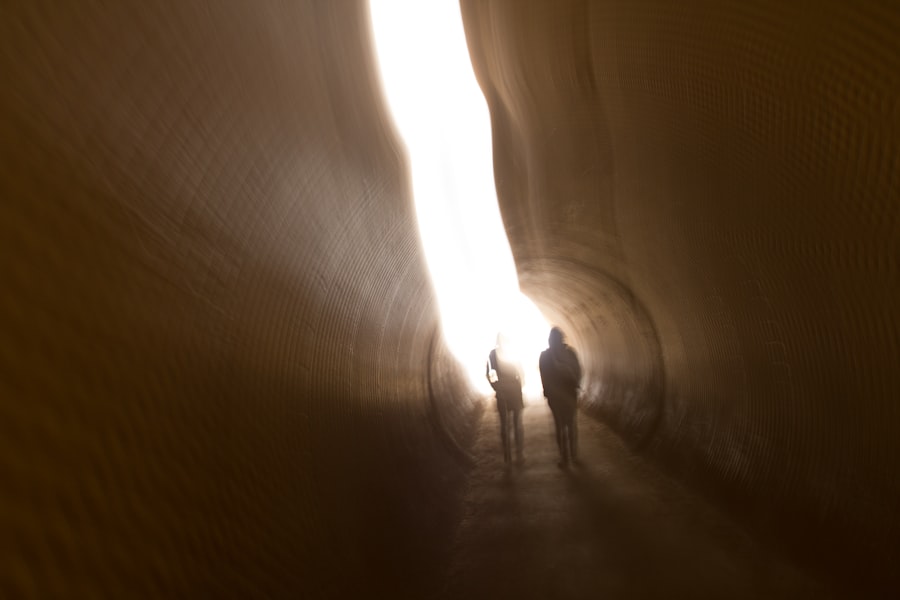The Drake Passage, a body of water that separates South America from Antarctica, is renowned for its tumultuous seas and unpredictable weather patterns. Stretching approximately 600 miles, this passage is often considered one of the most challenging maritime routes in the world. Sailors and adventurers alike have long been captivated by its fierce reputation, which stems from the confluence of the Atlantic and Pacific Oceans.
The currents here can be relentless, creating waves that can reach staggering heights, making it a formidable challenge for even the most seasoned mariners. Historically, the Drake Passage has played a significant role in exploration and trade. Named after Sir Francis Drake, who navigated these waters in the late 16th century, it has become a gateway for those seeking to explore the icy landscapes of Antarctica.
The passage is not only a physical barrier but also a symbolic one, representing the transition from the familiar comforts of civilization to the raw, untamed beauty of the southernmost continent.
Key Takeaways
- The Drake Passage is a body of water between South America’s Cape Horn and the South Shetland Islands of Antarctica, known for its rough seas and unpredictable weather.
- The best time to cross the Drake Passage is during the austral summer (November to March) when the weather is relatively milder and the seas are calmer.
- Prepare for the journey by consulting with a doctor about seasickness medication and getting travel insurance that covers medical emergencies and trip cancellations.
- Essential items to pack for the crossing include warm and waterproof clothing, sturdy footwear, and seasickness remedies.
- Safety precautions and emergency procedures include attending the mandatory safety briefing, knowing the location of life jackets and emergency exits, and following the instructions of the crew in case of an emergency.
Choosing the right time to cross
Selecting the optimal time to traverse the Drake Passage is essential for ensuring a smoother journey. The passage is notorious for its volatile weather conditions, which can vary dramatically depending on the season. Generally, the best time to cross is during the austral summer months, from late November to early March.
During this period, temperatures are milder, and the likelihood of encountering severe storms diminishes significantly. Travelers can expect calmer seas and more stable weather patterns, making for a more enjoyable crossing. However, even during the summer months, conditions can still be unpredictable.
It is vital for travelers to stay informed about weather forecasts and sea conditions leading up to their departure. Many experienced travelers recommend keeping an eye on long-range forecasts and being prepared for sudden changes in weather. Flexibility in travel plans can also be beneficial, as it allows for adjustments based on real-time conditions.
Ultimately, choosing the right time to cross the Drake Passage can greatly enhance the overall experience and reduce the chances of encountering treacherous seas.
Preparing for the journey

Preparation is key when it comes to crossing the Drake Passage. Travelers should begin their preparations well in advance of their departure date. This includes not only physical preparations but also mental readiness for what lies ahead.
Understanding the challenges of the passage and being aware of potential sea sickness can help travelers mentally prepare for their journey. Many find it helpful to read accounts from others who have crossed the passage, gaining insights into what to expect and how to cope with any discomfort. In addition to mental preparation, physical fitness plays a crucial role in ensuring a successful crossing.
While one does not need to be an athlete, maintaining a reasonable level of fitness can help travelers better handle the physical demands of being at sea. Engaging in regular exercise leading up to the journey can improve stamina and resilience. Furthermore, travelers should familiarize themselves with their vessel and its amenities, as well as any safety protocols that will be in place during the crossing.
This knowledge can provide peace of mind and enhance overall confidence as they embark on this adventure.
Packing essentials for the crossing
| Item | Quantity | Description |
|---|---|---|
| Water | 2 liters | Stay hydrated during the crossing |
| Snacks | 5 servings | Keep energy levels up |
| Sunscreen | 1 bottle | Protect skin from sun exposure |
| Hat | 1 | Shield from sun |
| First aid kit | 1 | For minor injuries |
Packing wisely is essential for a successful crossing of the Drake Passage. Given the unpredictable nature of the weather, travelers should prioritize versatile clothing that can be layered effectively. Waterproof jackets, thermal layers, and sturdy footwear are must-haves for navigating both onboard and on land excursions.
Additionally, packing a good pair of binoculars can enhance wildlife viewing opportunities during the journey. Beyond clothing, personal items such as seasickness medication should not be overlooked. Many travelers experience motion sickness while crossing the Drake Passage, so having remedies on hand can make a significant difference in comfort levels.
Other essentials include sunscreen, lip balm, and moisturizers to combat the harsh elements encountered at sea. A well-stocked travel first aid kit is also advisable, as it can address minor injuries or ailments that may arise during the journey. By packing thoughtfully, travelers can ensure they are well-prepared for whatever challenges may come their way.
Safety precautions and emergency procedures
Safety should always be a top priority when crossing the Drake Passage. Travelers must familiarize themselves with safety protocols established by their vessel’s crew before setting sail. This includes understanding emergency procedures such as man-overboard drills and evacuation routes.
Knowing how to respond in case of an emergency can significantly enhance safety and preparedness during the crossing. Additionally, travelers should pay attention to safety briefings provided by crew members upon boarding. These briefings often cover essential information about life jackets, lifeboats, and communication devices available onboard.
It is also wise for travelers to keep personal flotation devices accessible at all times while on deck. By taking these precautions seriously and remaining vigilant throughout the journey, travelers can enjoy their adventure with greater peace of mind.
Navigating the unpredictable weather

The weather in the Drake Passage is notoriously unpredictable, which can pose challenges for even the most experienced sailors. Sudden storms can arise without warning, leading to rough seas and strong winds that can make navigation difficult. Travelers should remain adaptable and prepared for changing conditions throughout their journey.
Staying informed about weather updates from onboard meteorologists or crew members can help travelers anticipate potential challenges. To navigate these unpredictable weather patterns effectively, it is essential for travelers to maintain a positive attitude and embrace flexibility in their plans. While rough seas may be daunting, they also offer an opportunity to witness nature’s raw power firsthand.
Many travelers find that embracing these moments enhances their overall experience and creates lasting memories of their adventure across one of the world’s most formidable maritime routes.
Wildlife encounters along the way
One of the most exciting aspects of crossing the Drake Passage is the opportunity to encounter diverse wildlife along the way. The waters are teeming with marine life, including seals, whales, and various seabird species that thrive in this unique ecosystem. Travelers often find themselves captivated by sightings of humpback whales breaching or orcas swimming gracefully alongside their vessel.
Birdwatching enthusiasts will also delight in spotting albatrosses gliding effortlessly above the waves. These magnificent birds are known for their impressive wingspans and are often seen following ships across the passage. Many vessels offer guided wildlife tours or educational programs that enhance travelers’ understanding of these creatures and their habitats.
Such encounters not only enrich the journey but also foster a deeper appreciation for the fragile ecosystems that exist in this remote part of the world.
Staying comfortable during the crossing
Comfort is paramount when embarking on a journey across the Drake Passage, especially given its reputation for rough seas. Travelers should take proactive steps to ensure they remain comfortable throughout their crossing. This includes choosing accommodations wisely; many vessels offer various cabin options ranging from basic dormitory-style rooms to luxurious suites with private balconies.
Onboard amenities play a significant role in enhancing comfort levels as well. Access to lounges, dining areas, and outdoor decks allows travelers to relax and unwind during calmer moments at sea. Additionally, maintaining proper hydration and nutrition is crucial; consuming light meals and staying hydrated can help mitigate feelings of seasickness while providing energy for activities onboard.
Activities and entertainment on board
To keep spirits high during the crossing, many vessels offer a range of activities and entertainment options designed to engage passengers throughout their journey. From educational lectures led by naturalists to film screenings showcasing documentaries about Antarctica’s unique environment, there is no shortage of opportunities for enrichment while at sea. Socializing with fellow travelers can also enhance the experience; shared stories and camaraderie often develop among passengers as they navigate this challenging passage together.
By participating in these activities, travelers can create lasting memories while making new friends along their journey.
Arrival in New Zealand
As travelers approach New Zealand after crossing the Drake Passage, excitement builds as they prepare to explore this stunning destination known for its breathtaking landscapes and rich cultural heritage. The arrival marks not only an end to an adventurous journey but also a new beginning filled with opportunities for exploration and discovery. Upon disembarking from their vessel, travelers are greeted by New Zealand’s diverse natural beauty—lush forests, majestic mountains, and pristine beaches await them.
Whether they choose to explore vibrant cities like Auckland or venture into remote national parks such as Fiordland or Abel Tasman, there is something for everyone in this captivating country. The transition from sea to land offers a chance to reflect on their experiences while embracing all that New Zealand has to offer.
Tips for a smooth and enjoyable journey
To ensure a smooth and enjoyable journey across the Drake Passage, travelers should keep several tips in mind. First and foremost, maintaining an open mind and positive attitude will go a long way in enhancing overall enjoyment during this adventure-filled crossing. Embracing spontaneity allows travelers to fully appreciate unexpected moments that may arise along the way.
Additionally, staying connected with fellow passengers fosters camaraderie and shared experiences throughout the journey. Engaging in conversations about wildlife sightings or exchanging travel tips can create lasting friendships that extend beyond this particular voyage. Lastly, taking time each day to reflect on personal experiences—whether through journaling or photography—can help capture memories that will last a lifetime.
In conclusion, crossing the Drake Passage is an extraordinary adventure that requires careful planning and preparation but rewards travelers with unforgettable experiences along the way. By understanding this unique maritime route, choosing optimal travel times, preparing adequately for challenges ahead, prioritizing safety measures, navigating unpredictable weather patterns effectively, embracing wildlife encounters enthusiastically while staying comfortable onboard—all contribute towards creating cherished memories during this remarkable journey into one of nature’s most awe-inspiring realms.
The Drake Passage is a renowned maritime route that connects the Atlantic and Pacific Oceans, often considered a rite of passage for sailors due to its challenging conditions. For those interested in exploring more about this treacherous yet fascinating journey, a related article can be found on MyGeoQuest. This article delves into the historical significance and the modern-day experiences of navigating this passage, offering insights into the natural beauty and the navigational challenges faced by mariners. To read more about this intriguing topic, visit the article on MyGeoQuest.
WATCH NOW! Drake Passage: Earth’s Deadliest Waters Revealed
FAQs
What is the Drake Passage?
The Drake Passage is the body of water between the southern tip of South America and the northern tip of the Antarctic Peninsula. It is known for its rough seas and challenging sailing conditions.
How long does it take to cross the Drake Passage?
The crossing of the Drake Passage can take anywhere from 2 to 4 days, depending on weather conditions and the route taken by the vessel.
What is the weather like in the Drake Passage?
The weather in the Drake Passage is notoriously unpredictable and can change rapidly. It is characterized by strong winds, rough seas, and cold temperatures, with the potential for storms and high waves.
What is the best time to travel through the Drake Passage?
The best time to travel through the Drake Passage is during the austral summer, from November to March, when the weather is relatively milder and there is more daylight.
What is the significance of the Drake Passage to New Zealand?
The Drake Passage is significant to New Zealand as it is a key route for ships traveling between the Pacific and Atlantic Oceans. It provides access to the Southern Ocean and Antarctica, and is an important part of global shipping routes.
